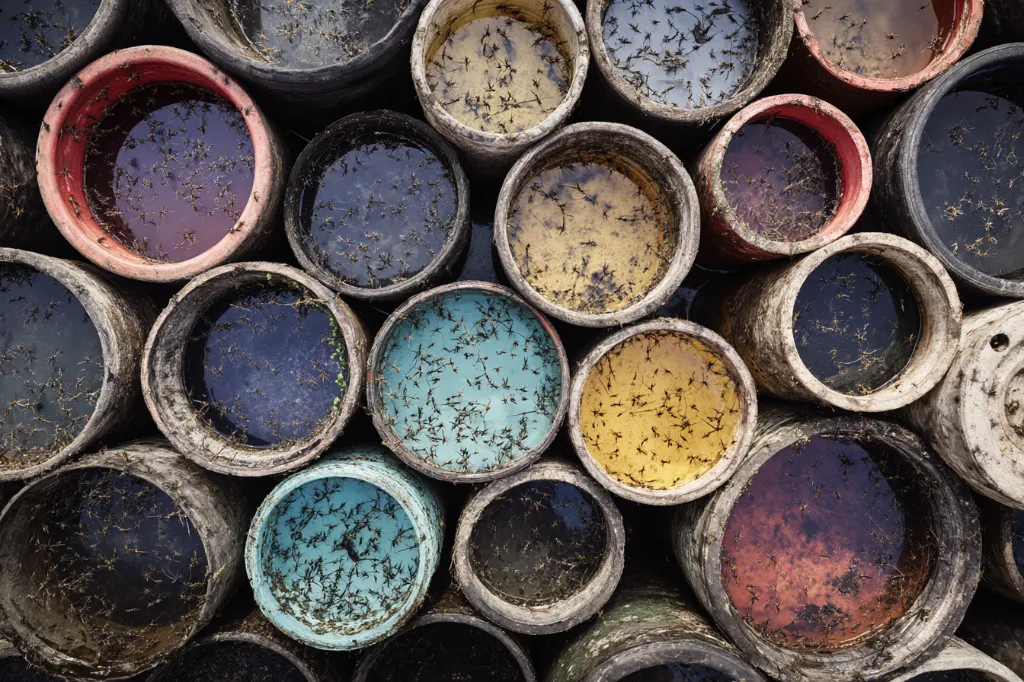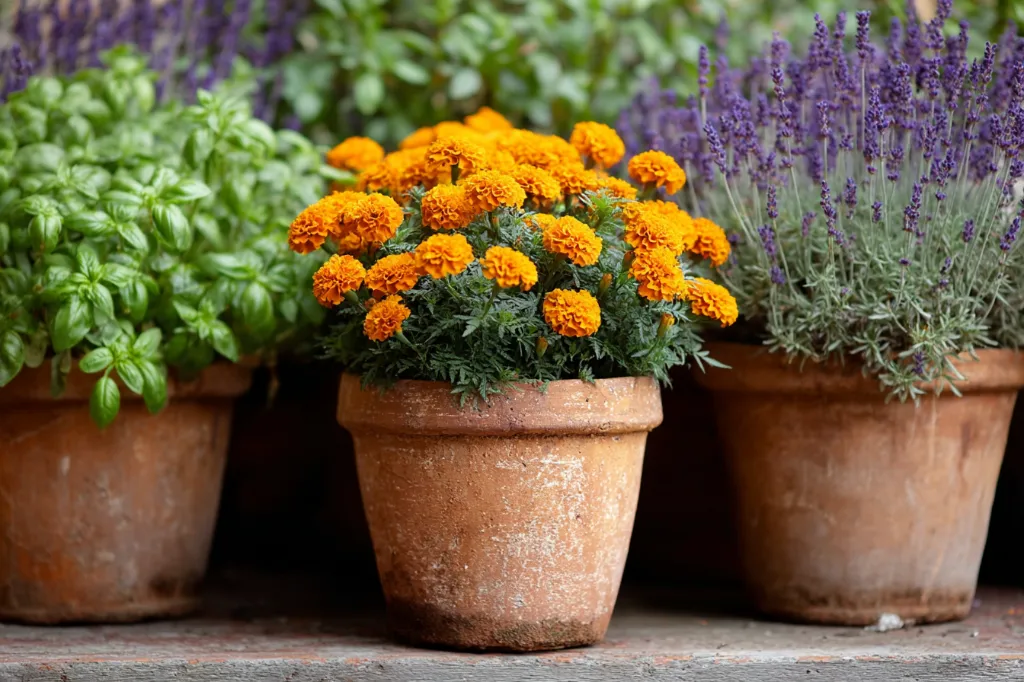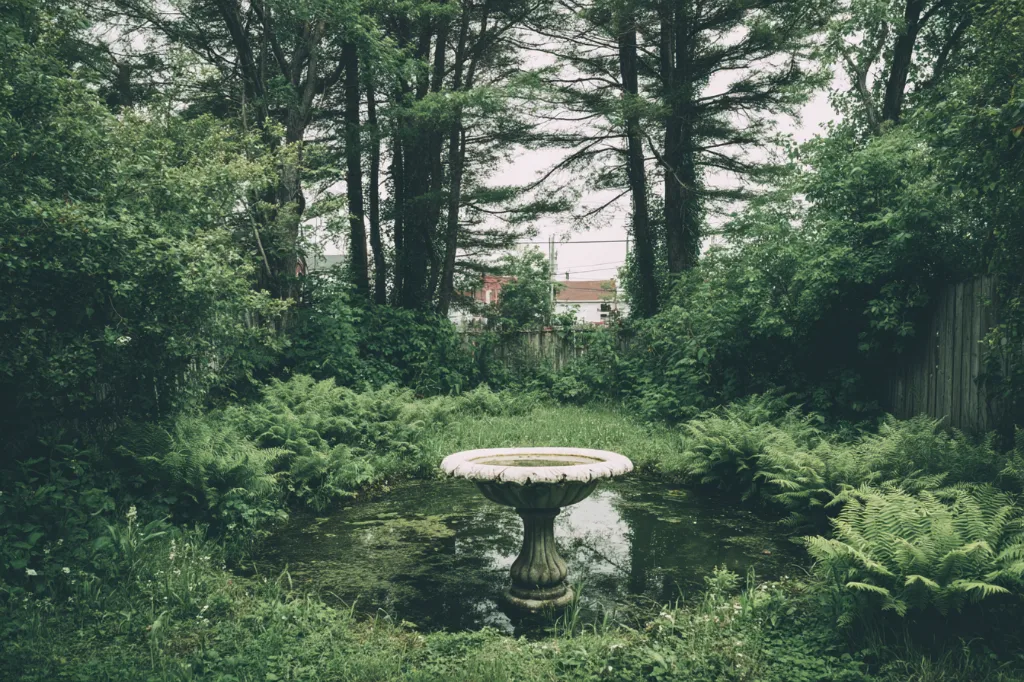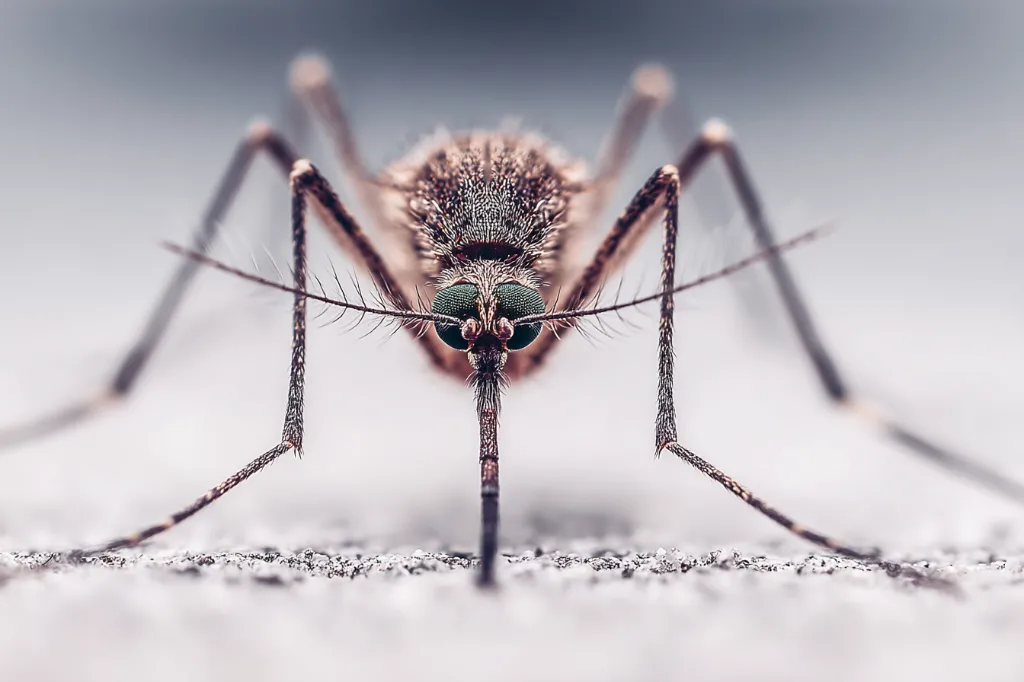Using non-chemical methods to fight mosquitos is a sustainable approach that minimizes potential side effects on your family and local wildlife.
By understanding mosquito behavior and implementing natural solutions, you can create a comfortable outdoor space without relying on chemical insecticides. This post covers natural repellents, preventative measures, and physical controls that work together in an integrated mosquito management system.Understanding Mosquito Behavior
What Attracts Mosquitos
Mosquitos are drawn to:
- Standing Water: Breeding grounds for eggs and larvae.
- Warm Temperatures & Humidity: Ideal conditions for their growth.
- Carbon Dioxide: Produced by humans and animals, signals a potential food source.
- Strong Scents: Sweat and body odors can also attract mosquitos.
Mosquito Life Cycle
Understanding the mosquito life cycle is key:
- Egg: Laid on water surfaces or in damp soil.
- Larva: Develops in standing water; this is the stage where water management is most effective.
- Pupa: Transitional stage.
- Adult: Emerging from the pupal case; adults are the flying insects that bite.
Targeting the larval stage by eliminating standing water can significantly reduce adult mosquito populations.

Preventive Measures: Eliminate Breeding Grounds
Remove Standing Water
- Inspect Your Property:
Regularly check for puddles, clogged gutters, and bird baths that hold water. - Empty Containers:
Turn over items like buckets, plant saucers, and wheelbarrows to prevent water accumulation. - Maintain Pools and Ponds:
Use a pump or waterfall feature to circulate water or add natural predators like fish where appropriate.
Landscaping and Drainage
- Improve Drainage:
Ensure your yard slopes away from the house so water doesn’t pool. - Rain Gardens:
Consider installing a rain garden that directs water into the soil rather than allowing it to stagnate. - Permeable Surfaces:
Use permeable paving materials to improve water runoff and reduce standing water areas.
These steps lower the number of breeding sites and cut off the life cycle of mosquitos before they mature.
Natural Repellents and Plant-Based Solutions
Essential Oils and Natural Repellents
- DIY Sprays:
Create your own mosquito spray using ingredients like citronella, lemon eucalyptus, or lavender oil mixed with water. Shake well and apply to clothing or exposed skin. - Diffusers:
Use essential oil diffusers outdoors during gatherings to help deter mosquitos naturally.

Mosquito-Repelling Plants
Incorporate these plants into your garden:
- Citronella: Known for its strong scent that repels mosquitos.
- Basil: Can be planted around patios and decks.
- Marigolds and Lavender: Both add beauty to your garden while providing a natural defense.
Planting these around seating areas and entry points can create a barrier that helps reduce mosquito activity.

Physical Controls and Barriers
Mosquito Traps and Fans
- Mosquito Traps:
Consider using CO₂ or UV light traps that lure and capture mosquitos without chemicals. - Outdoor Fans:
Strong fans on patios and decks disrupt mosquito flight patterns, making it harder for them to land.
Protective Barriers
- Screens and Nets:
Install screens on windows and doors, and use mosquito nets around beds or outdoor seating areas. - Curtains or Mesh:
Use outdoor curtains or mesh to define living spaces and keep mosquitos at bay during gatherings.
These physical barriers help protect you and your family by reducing the number of mosquitos that can access your living spaces.
Encouraging Natural Predators
Attract Beneficial Wildlife
- Bats: Bats are natural mosquito predators. Install bat houses to attract them to your yard.
- Birds: Many birds feed on mosquitos. Provide bird feeders and water sources to encourage local species.
- Dragonflies: Dragonflies are voracious mosquito eaters; adding a small pond or water feature can attract them.
Encouraging these natural predators creates a balanced ecosystem that can naturally reduce mosquito populations over time.
Integrated Mosquito Management
Combining these strategies leads to the most effective control:
- Eliminate Breeding Sites: Focus on removing standing water and improving drainage.
- Use Natural Repellents: Apply essential oil sprays and plant mosquito-repelling species.
- Install Physical Controls: Set up traps, fans, and protective barriers.
- Attract Predators: Enhance your yard’s ecosystem by supporting bats, birds, and dragonflies.
Regularly monitor your yard and adjust your methods seasonally to maintain low mosquito activity.

Seasonal Mosquito Control Tips
Spring and Summer
- Early Action: Remove standing water as soon as temperatures rise.
- Planting: Add mosquito-repelling plants before peak mosquito season.
- Monitoring: Check your yard weekly for new water accumulation and potential breeding sites.
Fall
- Maintenance: Prepare your yard by clearing leaves and debris that can trap water.
- Final Checks: Conduct thorough inspections before winter to prevent overwintering of mosquito larvae.
Year-Round
- Regular Inspections:
Keep up with maintenance tasks to prevent breeding sites at all times. - Adaptive Strategies:
Adjust your integrated approach based on seasonal weather changes and mosquito activity patterns.
Fighting mosquitos without chemicals is achievable through a combination of preventive measures, natural repellents, physical barriers, and support for natural predators.
Adopting these integrated strategies not only reduces mosquito populations but also promotes a healthier, more balanced environment in your yard. Implement these tips to create a comfortable outdoor space free from chemical use.
For personalized advice or additional lawn care solutions, contact Greenstripe and let our experts guide you toward creating a mosquito-friendly environment.



